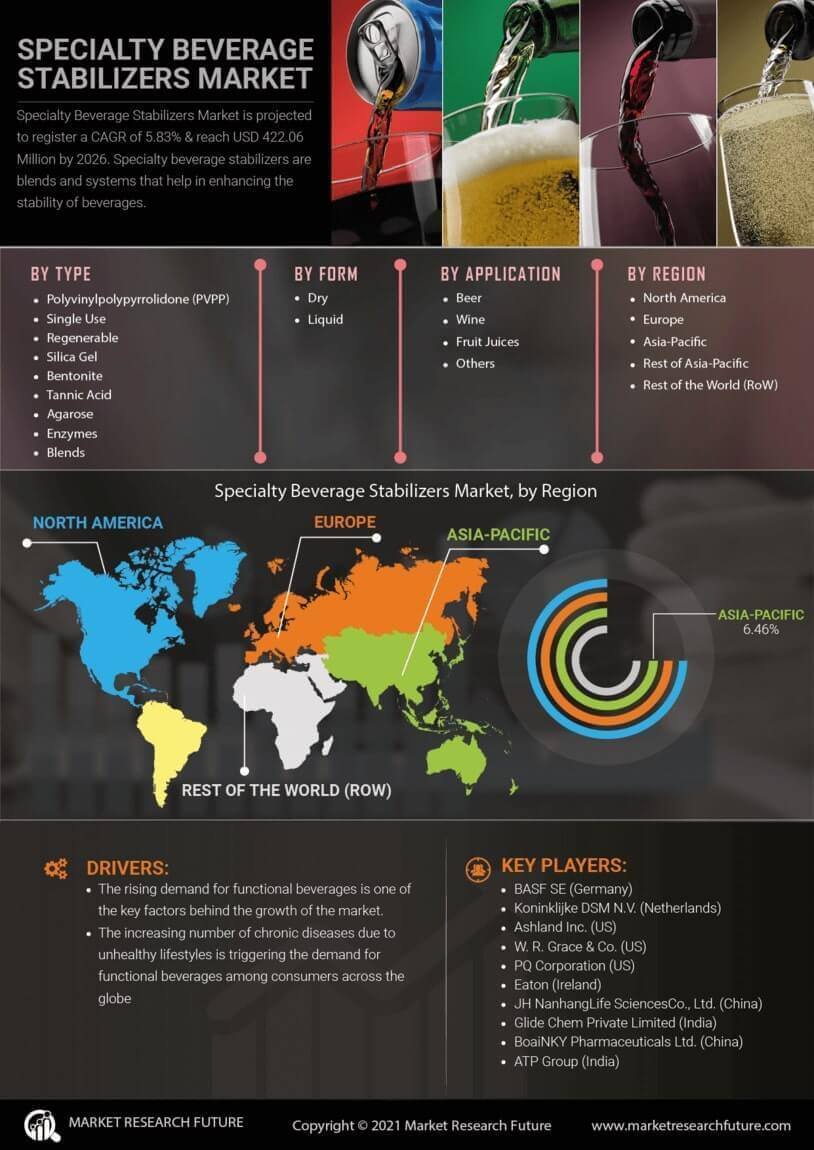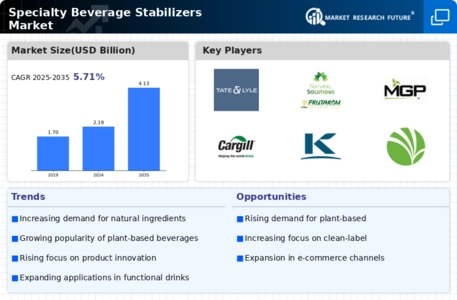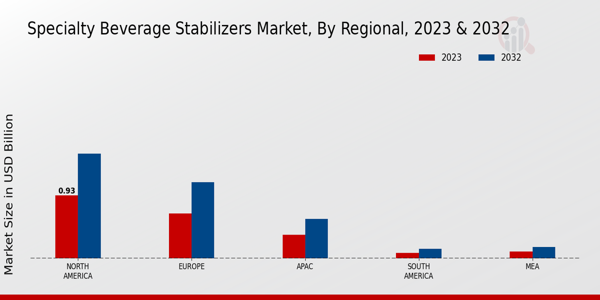Market Growth Projections
The Global Specialty Beverage Stabilizers Market Industry is projected to experience substantial growth in the coming years. With a market value anticipated to reach 2.19 USD Billion in 2024 and further expand to 4.13 USD Billion by 2035, the industry is on a promising trajectory. This growth is underpinned by a compound annual growth rate (CAGR) of 5.95% from 2025 to 2035, indicating a robust demand for specialty stabilizers. The increasing diversity of beverage offerings and the rising focus on product quality and stability are likely to drive this expansion, positioning specialty beverage stabilizers as a vital component in the evolving beverage landscape.
Health and Wellness Trends
Health and wellness trends significantly impact the Global Specialty Beverage Stabilizers Market Industry, as consumers increasingly prioritize nutritious and functional beverages. The demand for products that offer health benefits, such as enhanced hydration or added vitamins, drives manufacturers to incorporate specialty stabilizers that maintain product integrity. This trend is evident in the rise of functional beverages, which often require advanced stabilizing solutions to ensure efficacy and appeal. As consumers become more discerning about their beverage choices, the market for specialty stabilizers is likely to expand, reflecting a broader shift towards health-oriented consumption patterns.
Expansion of the Beverage Industry
The Global Specialty Beverage Stabilizers Market Industry is poised for growth due to the ongoing expansion of the beverage industry. With an increasing number of startups and established companies entering the market, the demand for specialty stabilizers is likely to rise. The beverage sector is diversifying, with new product lines emerging, including functional drinks and ready-to-drink options. This diversification necessitates the use of stabilizers to maintain product quality and consistency. As the industry continues to expand, the market value is projected to reach 4.13 USD Billion by 2035, highlighting the potential for specialty beverage stabilizers to play a pivotal role in this growth.
Rising Demand for Non-Alcoholic Beverages
The Global Specialty Beverage Stabilizers Market Industry experiences a notable surge in demand for non-alcoholic beverages, driven by changing consumer preferences towards healthier options. As consumers increasingly seek alternatives to traditional alcoholic drinks, manufacturers are compelled to innovate. This trend is reflected in the projected market value of 2.19 USD Billion in 2024, indicating a robust growth trajectory. Specialty beverage stabilizers play a crucial role in enhancing the texture and stability of these beverages, ensuring a consistent product that meets consumer expectations. This shift towards non-alcoholic options is likely to propel the market further, as companies adapt to evolving consumer tastes.
Regulatory Compliance and Quality Standards
Regulatory compliance and quality standards are critical drivers in the Global Specialty Beverage Stabilizers Market Industry. As governments and regulatory bodies impose stricter guidelines on food and beverage safety, manufacturers must ensure that their products meet these standards. Specialty beverage stabilizers are essential in this context, as they help maintain product quality and safety throughout the supply chain. Compliance with regulations not only protects consumers but also enhances brand reputation. As the market evolves, adherence to these standards will likely influence the selection and formulation of stabilizers, shaping the future landscape of the beverage industry.
Technological Advancements in Beverage Production
Technological advancements significantly influence the Global Specialty Beverage Stabilizers Market Industry, as innovations in production processes enhance the efficacy of stabilizers. New formulations and processing techniques allow for improved texture, mouthfeel, and shelf stability of beverages. For instance, the incorporation of plant-based stabilizers aligns with the growing trend towards clean label products, appealing to health-conscious consumers. As the market evolves, these technological improvements are expected to contribute to a compound annual growth rate (CAGR) of 5.95% from 2025 to 2035. This growth reflects the industry's adaptability and commitment to meeting consumer demands through innovative solutions.























Leave a Comment